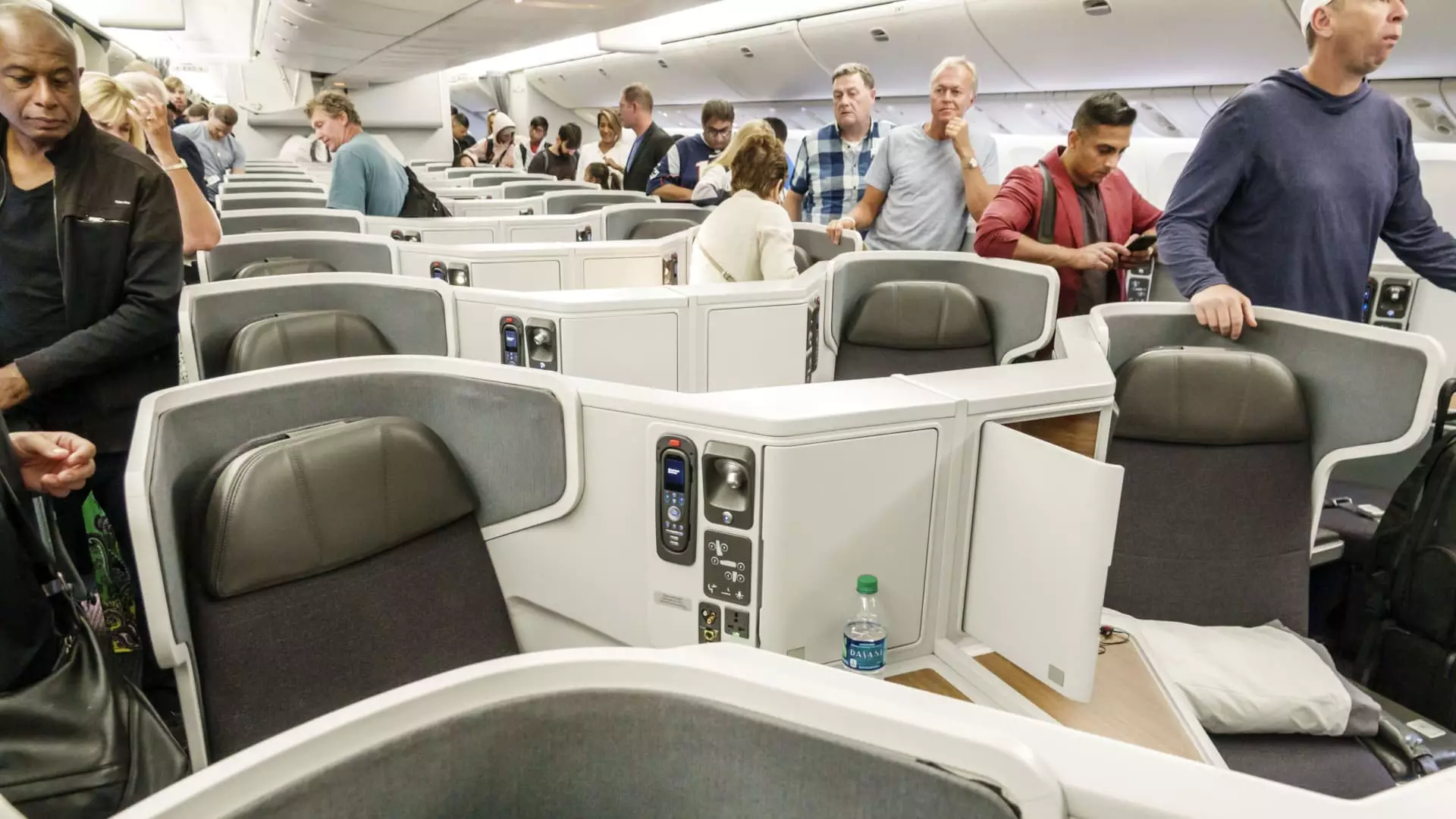The travel industry is undergoing a significant transformation as airlines adapt to changing consumer preferences in the wake of the COVID-19 pandemic. Once primarily focused on offering budget travel, airlines are now recognizing a growing demand for premium experiences, leading to a redefined landscape in air travel where the competition for space in the front cabin has intensified dramatically. This shift is reshaping airline loyalty programs and seating arrangements, directly impacting how airlines manage and market their services.
The aftermath of the pandemic has altered travelers’ expectations, with many willing to invest significantly more for a seat that offers greater comfort and space. This growing preference has resulted in a surge in demand for premium cabin seats, filling up many of the available spaces and limiting options for passengers seeking complimentary upgrades to these coveted areas. The competition has grown fiercer, particularly among frequent flyers who have achieved elite status within airlines’ loyalty programs. Such shifts in behavior are indicative of a broader trend where convenience and comfort take precedence over cost.
As we look towards the forthcoming holiday seasons, airlines brace for record-high passenger numbers. Executives project that even during what would typically be considered off-peak travel periods—like early 2025—demand will remain robust. According to Cirium, an aviation data firm, U.S. airline capacity is set to increase by approximately 1% in the first quarter of the year, as airlines prioritize maximizing profits by making their premium offerings more desirable.
The price disparity between economy and premium seating varies widely based on several factors, including route, demand, and seasonal trends. For instance, a direct flight from Newark to Los Angeles can see a ticket costing around $347 for economy but soaring to nearly $1,800 for a seat in United Airlines’ premium cabin. This marked difference is not purely financial; it reflects the increasing trend of passengers wanting to secure a little luxury during their travels.
Airlines have simultaneously revised their frequent flyer programs to align with this shifting demand. Historically, frequent flyer loyalty was earned primarily through miles traveled. However, airlines are now placing greater emphasis on passenger spending, raising the financial threshold required to maintain elite status. In turn, this adjustment has increased the number of elite members, further exacerbating competition for premium seats.
The evolution of airline services is evident when we consider how first-class cabin bookings have shifted over the years. Fifteen years ago, only a small fraction of Delta Air Lines’ domestic first-class seats were sold; today, that figure has soared to over 75%. This transformation follows a strategic pivot where airlines have begun to treat their premium offerings not just as a loyalty incentive but as significant revenue generators. This trend is seen industry-wide, with companies like Frontier Airlines opting to introduce more spacious first-class configurations, while JetBlue has recently announced plans to add new business-class seating.
The competitive nature of the industry means that airlines are continuously looking for innovative ways to attract affluent travelers. American Airlines’ enhancements, which include making it easier for customers to upgrade to higher-class seating after their initial purchase, exemplify this shift. Similarly, airplanes are being retrofitted with larger international business-class cabins, focused on enhancing the overall passenger experience with features like sliding doors for additional privacy.
Not all airlines are pursuing the same strategies, as several players have chosen unique paths. Alaska Airlines, for example, is in the process of upgrading its fleet to include more premium seating as it expands its international flight offerings. Meanwhile, Southwest Airlines is opting to add extra-legroom sections instead of introducing traditional first-class sections, reflecting a commitment to maintaining lower-density configurations on its aircraft while catering to the shifting desires of younger travelers for a more premium experience.
CEO Bob Jordan’s comments illustrate a generational shift in travel habits. Younger customers express a greater willingness to spend on travel and experiences rather than other material goods, prompting companies to rethink their strategies. However, the delicate balance between enhancing passenger experience and maintaining operational efficiency remains a tightrope that airlines must navigate carefully.
As the airline industry faces ongoing changes in consumer preferences and travel behaviors, the emphasis on premium seating is likely to persist. With rising customer expectations for comfort and convenience, it is clear that airlines must innovate and adapt to stay competitive. From reimagined loyalty programs to strategically reconfigured aircraft, the industry is on the cusp of a more luxurious era of travel that seeks to cater to a market increasingly willing to pay for a premium experience in the skies. The future of air travel promises more comfort and choice, reshaping the way we perceive flying long distances.


Leave a Reply